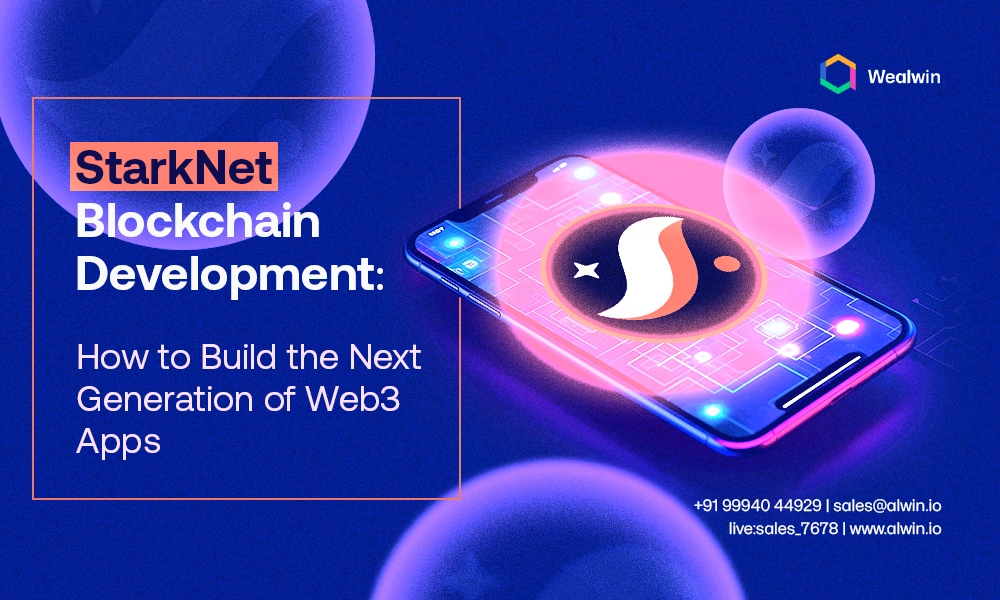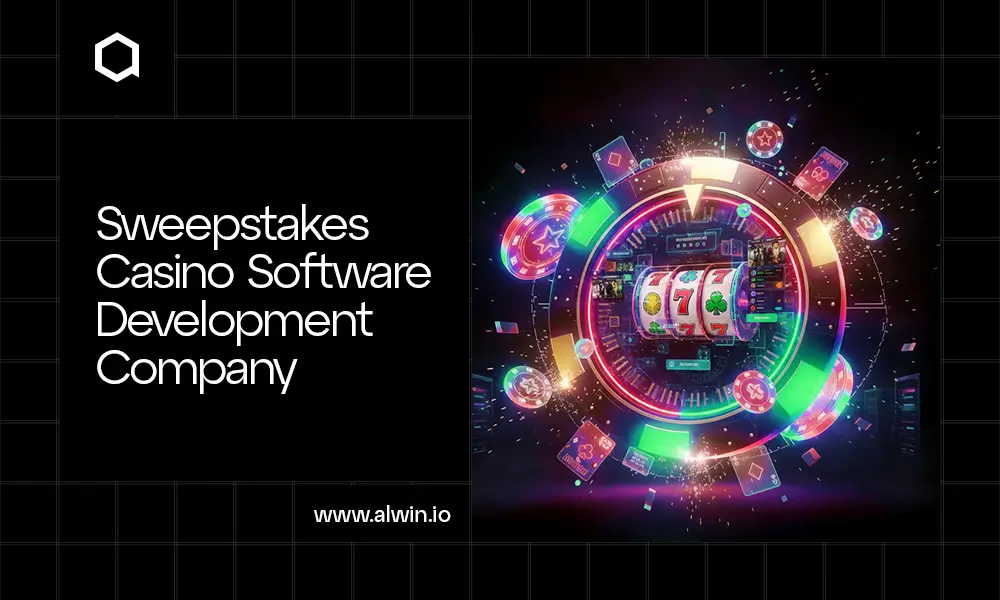For every progress in blockchain technology, there’s a coming about of a brand new innovation. Welcome to the future of blockchain! StarkNet development is rewriting the rules, promising blazing-fast transactions and eco-friendly solutions. Let's explore its potential, the workflow, how it gets developed and, above all, its implications in this exciting blog series.
A crux of StarkNet
StarkNet is a Layer 2 scaling solution for Ethereum that uses zero-knowledge (ZK) proofs to achieve massive scalability without compromising on security. It is a decentralized, permissionless, and censorship-resistant network that can support general computation over Ethereum.
Why is StarkNet Important in the Blockchain Space?
StarkNet is important in the blockchain space because it has the potential to solve the scalability trilemma, which is the challenge of achieving scalability, security, and decentralization simultaneously.
Scalability: It’s one of the biggest challenges facing Ethereum today. The network can only process around 15 transactions per second, which is far too low to meet the demands of a growing ecosystem of decentralized applications. StarkNet addresses this problem by using zero-knowledge proofs (ZKPs) to bundle thousands of transactions off-chain and generate a single proof that is submitted to the Ethereum mainnet for verification. This process allows StarkNet to process thousands of transactions per second, without sacrificing security or decentralization.
Security: It’s another critical factor to consider when evaluating a scaling solution. StarkNet inherits the security of Ethereum Layer 1, as all transactions are ultimately settled on the Ethereum mainnet. In addition, StarkNet uses a variety of cryptographic techniques to ensure the integrity of its proofs and protect users from malicious actors.
Decentralization: It’s the third pillar of the scalability trilemma. StarkNet is a permissionless and decentralized network, meaning that anyone can join and participate in the network without permission from a central authority. This is important because it ensures that the network is resistant to censorship and manipulation.
StarkNet Vs Other Blockchains
StarkNet compares favorably to other blockchains in a number of ways, including its core features: scalability, security, cost-effectiveness, and composability.
It is one of the most scalable blockchain solutions available, with the ability to process thousands of transactions per second. It inherits the security of Ethereum Layer 1, as all transactions are ultimately settled on the Ethereum mainnet.
StarkNet transactions are significantly cheaper than Ethereum Layer 1 transactions, due to the use of ZKPs. StarkNet is also compatible with all existing Ethereum applications, making it easy for developers to migrate their projects to StarkNet.
Other blockchains, such as Ethereum, Solana, Avalanche, and Polygon, have their own strengths and weaknesses. Ethereum is the most secure and decentralized blockchain, but it is also the least scalable. Solana, Avalanche, and Polygon are all more scalable than Ethereum, but they sacrifice some security and decentralization in order to achieve scalability.
Consult with our business experts for the dissemination of StarkNet Blockchain Development! Chat with us on WhatsApp
How Does StarkNet Work?
StarkNet works by bundling thousands of transactions off-chain and generating a single ZKP that proves the validity of all transactions in the bundle. This ZKP is then submitted to the Ethereum mainnet for verification and settlement.
ZKPs are a cryptographic technique that allows users to prove that they know something without revealing what that thing is. In the context of StarkNet, ZKPs are used to prove that a set of transactions has been executed correctly, without revealing the details of those transactions to the Ethereum mainnet.
This process allows StarkNet to process thousands of transactions per second, while still maintaining the security and decentralization of Ethereum Layer 1.
StarkNet Blockchain Development
StarkNet blockchain development is the process of building decentralized applications on StarkNet. It is a challenging but rewarding experience, as StarkNet offers a unique combination of scalability, security, and cost-effectiveness.
To develop on StarkNet, developers need to use the Cairo programming language. Cairo is a specialized language designed for building StarkNet applications. It is easy to learn and use, and it provides a number of features that make it well-suited for StarkNet development.
Once developers have learned Cairo, they can start building their StarkNet applications. StarkNet provides a number of tools and resources to help developers get started, including the StarkNet Studio and the StarkNet Portal.
StarkWare:The Driving Force behind StarkNet
StarkWare is a company that develops zero-knowledge (ZK) proofs and scaling solutions for blockchains. StarkNet is a Layer 2 scaling solution for Ethereum that uses ZK proofs to achieve massive scalability without compromising on security. StarkWare is the driving force behind StarkNet, and the company is committed to making StarkNet the most scalable and secure Layer 2 scaling solution for Ethereum.
StarkWare was founded in 2018 by Eli Ben-Sasson, Nadav Kohen, and Michael Riabzevych. The company is composed of a team of world-renowned experts in cryptography and blockchain technology. StarkWare has raised over $250 million in funding from investors such as Sequoia Capital, Paradigm, and Pantera Capital.
StarkWare's technology has been used to build a number of successful products, including StarkEx, a platform that powers decentralized exchanges such as dYdX and Immutable X. StarkWare is also the company behind the Cairo programming language, which is used to build StarkNet applications.
Enterprise Adoption of StarkNet
There are a number of reasons why enterprises are interested in adopting StarkNet. First, StarkNet offers significant scalability benefits. StarkNet can process thousands of transactions per second, which is significantly faster than Ethereum Layer 1. This makes StarkNet a compelling platform for building enterprise applications that need to handle a high volume of transactions.
Second, StarkNet offers strong security guarantees. StarkNet inherits the security of Ethereum Layer 1, as all transactions are ultimately settled on the Ethereum mainnet. This means that StarkNet applications are just as secure as Ethereum Layer 1 applications.
Third, StarkNet offers cost-effectiveness benefits. StarkNet transactions are significantly cheaper than Ethereum Layer 1 transactions. This makes StarkNet a more affordable platform for building and using enterprise applications.
Fourth, StarkNet is compatible with all existing Ethereum applications. This means that enterprises can easily migrate their existing applications to StarkNet and take advantage of the platform's scalability, security, and cost-effectiveness.
A number of enterprises have already expressed interest in adopting StarkNet. For example, StarkWare has partnered with a number of leading financial institutions to develop StarkNet applications. StarkWare is also working with a number of other enterprises to develop applications on StarkNet.
Conclusion
With the power to handle complex computations off-chain while upholding Ethereum's trust, StarkNet opens new horizons for developers, investors, and blockchain enthusiasts alike. As we anticipate its evolution, StarkNet's journey will undoubtedly continue to redefine how we engage with decentralized systems, forging a greener, more efficient path forward for innovative blockchain development. Stay tuned for a promising future led by StarkNet's pioneering advancements.



